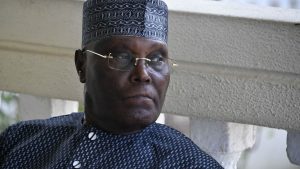Somalia’s Path to Peace – Why Three-State Solution Offers Most Realistic Future

Addis Abeba — For decades, the international community has held fast to the aspiration of a unified Somalia. Yet that vision–however noble–no longer corresponds with realities on the ground. Somalia today is not a single, functioning nation but a fragmented territory composed of three distinct political entities: Somaliland, Puntland, and South/Central Somalia. Each region has its governance structure, security apparatus, and political trajectory.
Rather than continuing to pursue an outdated dream of centralized unity, this article proposes a pragmatic alternative: a three-state solution. This model does not advocate fragmentation for its own sake–it reflects the lived reality of millions of Somalis and offers a sustainable path to peace, cooperation, and regional development.
Somalia’s disunity is deeply rooted in history. It began with the flawed 1960 union between British Somaliland and Italian Somalia–a merger riddled with inequality and imbalance. The northern region, which contributed an estimated 62% of national revenue, was granted just 22% of parliamentary seats. Political marginalization and authoritarian repression under Siad Barre’s regime further fueled tensions, particularly in the north.
These grievances sparked the 1988 civil war and ultimately led to the collapse of Somalia’s central government in 1991. Since then, the country has operated as a de facto tripartite system, with no genuine reunification.
Somaliland: A de facto state with functioning institutions
Since declaring independence in 1991, Somaliland has become one of the most stable and democratic nations in Africa. Key signs of this progress include regular multiparty elections, a credible judicial system, no terrorist incidents in 2024, and control over its own currency (the Somaliland shilling), passports, and armed forces.
Somaliland also meets all the main criteria for statehood under international law. These include clearly defined borders–those of the former British Protectorate–a permanent population, and a functioning government that maintains effective control. Despite this, Somaliland remains unrecognized by the international community–denying it access to multilateral institutions, international lending, and diplomatic recognition.
Puntland: Autonomous and proactive in security
Established in 1998, Puntland, widely regarded as an autonomous territory within Somalia, has pursued autonomy within a federal framework rather than complete secession. The region has maintained a degree of political stability while asserting its prerogatives concerning natural resources and territorial boundaries.
In 2024, Puntland launched Operation Hilaac, a major military campaign targeting ISIS and Al-Shabaab strongholds in the Cal Miskaad Mountains. Backed by U.S. air support, the operation successfully disrupted insurgent networks. Despite such achievements, Puntland continues to clash with Mogadishu over federal powers and remains an indispensable partner in counterterrorism efforts across the Horn of Africa.
South/Central Somalia: A region in perpetual crisis
Despite years of international engagement and billions in aid, South/Central Somalia remains mired in conflict and fragile governance. In 2025, Al-Shabaab’s “Operation Ramadan” saw the group recapture at least 15 towns–including Bal’ad and Bacadweyne–across the Shabelle and Hiran regions.
Government forces and AU troops are overstretched and underfunded, while extremist influence remains strong. However, civil society groups persist in their efforts to deliver basic services and justice, often filling the void left by the state. This region demands more than temporary aid. It requires internationally guided stabilization, long-term capacity building, and institutional reform.
Pragmatism over romanticism
Holding onto the idea of Somali unity through centralization ignores more than three decades of disintegration. A better, peaceful path would be to recognize Somaliland as an independent republic, honoring its strong democratic governance; Puntland as an autonomous state linked to a future Somali federation, much like Puerto Rico’s relationship with the United States; and South/Central Somalia as a UN-supervised trusteeship, allowing time for peacebuilding and political reform.
Holding onto the idea of Somali unity through centralization ignores more than three decades of disintegration.”
This approach has historical support. Successful splits have worked before, such as Czechoslovakia’s division into two independent states, the Czech Republic and Slovakia, in 1993; Eritrea’s independence from Ethiopia that same year; and South Sudan’s internationally supervised secession in 2011. These examples demonstrate that state reconfiguration can be peaceful and internationally supported.
Facing challenges with resolve
Adopting a three-state solution will not be easy. The first challenge is nationalist sentiment–many still hold onto the dream of a single Somali state. Second is international reluctance, fueled by concerns that recognizing new states could encourage secessionist movements elsewhere. Third are legal and technical hurdles, such as dividing resources, setting borders, and protecting minority rights.
Still, these challenges are far smaller than the cost of continuing with business as usual: ongoing instability, extremism, and human suffering. A managed transition–supported by the United Nations, the African Union, and regional partners–can offer the structure needed for a peaceful and lasting realignment.
To support a peaceful transformation, the international community should take several key steps. First, it must acknowledge the political reality on the ground. This means opening formal dialogues with Somaliland, Puntland, and South/Central Somalia as separate entities.
Second, it should establish legal mechanisms for separation. This includes supporting frameworks for peaceful disengagement–such as resource-sharing agreements, border commissions, and protections for minority groups.
Third, investment must be tailored to each region’s needs. In Somaliland, focus on infrastructure like the Port of Berbera, digital governance, and education. In Puntland, support energy development and security services. In South/Central Somalia, prioritize humanitarian aid and peacebuilding efforts led by the United Nations. Finally, launch a UN trusteeship in South/Central Somalia. This should be a time-limited mission aimed at stabilizing governance, overseeing elections, and helping build strong local institutions.
Conclusion
Somalia is no longer a unified state–it has become three distinct political entities. Somaliland is a functioning democracy, yet still lacks international recognition. Puntland is a stable, autonomous region that plays a key role in regional security and counterterrorism. South/Central Somalia is a territory in urgent need of international support and oversight. It’s time for the international community to stop romanticizing unity and the idea of a unified Somalia and begin supporting the realities on the ground. This is not a call for division–it’s a call for realism, dignity, and lasting peace.
By Addis Standard.



